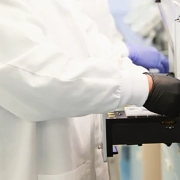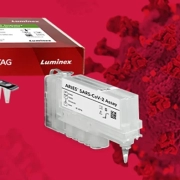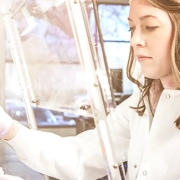5 Ways Luminex Can Support Your Antimicrobial Stewardship Efforts
Rapid diagnostic molecular assays can have a tremendously positive impact on patient care, but only if they are quickly implemented and results are utilized by clinical stakeholders.
This is most apparent with the introduction of rapid blood culture tests. The VERIGENE® Gram-Positive and Gram-Negative Blood Culture Tests are critical, frontline tools that are used by clinicians every day to help optimize treatment decisions. To ensure you get the most from these tests, Luminex® offers several valuable resources to help integrate them into your hospital’s Antimicrobial Stewardship efforts.
One of these resources is Luminex’s Clinical Implementation Program. Clinical Implementation Managers (CIMs) are RN-level team members who help navigate the process of taking VERIGENE Blood Culture tests live and increase utilization. Best practices have shown that the earlier CIMs are brought into the implementation timeline, the sooner results can make a difference. CIMs’ expertise is not limited to blood culture implementation—they can also assist with go-live processes for the complete VERIGENE® test menu.
CIMs are not sales representatives—they’re expert strategists who have peer-to-peer conversations with your clinical team to help determine your specific needs. Since launching the Clinical Implementation Program, we’ve identified the top five areas where we most commonly provide assistance:
- IT Department: Believe it or not, the IT department is often the slowest to implement new testing, largely because of the strict guidelines they have for ensuring the security of online systems, and because of the numerous departments they support. Luminex’s CIMs can help with reporting language, and LIS examples from other institutions can be used to drive result reporting. Along with Luminex’s Applications Team, CIMs can also help guide specific server-related questions to our internal IT Implementation Manager for further assistance.
- Assay Verification: In partnership with the lab and our Applications Team, CIMs can help resolve differences between your current methodology and the VERIGENE tests. As assays advance through the go-live process, CIMs can check in to see how testing is going, as well as perform post go-live follow-up with the lab to monitor results. CIMs can also offer proactive check-ins to ensure a smooth transition to live testing.
- Partnership with Antimicrobial Stewardship: CIMs can develop one-on-one relationships with clinical stakeholders and lead multi-disciplinary meetings with pharmacy, lab, critical care, and infection control teams. In these meetings, the pathway to success can be mapped out to give more in-depth background on assays and develop plans for education. One size does not fit all, and some hospitals may be in earlier stages of antimicrobial stewardship development than others. CIMs can help create a success plan based on the hospital’s unique starting point.
- Treatment Algorithms: How will the results be handled? It’s a question of whether the pharmacy or the physician will be the point person for results. Not sure? That’s OK. CIMs can help fill the gaps with examples and technical information from other sites using the VERIGENE platforms.
- Education: CIMs can offer peer-level conversations and Clinical Education Recognition Points, or CERP-accredited presentations, for critical and acute care nurses. They can also partner with Medical Staff Services to coordinate Continuing Medical Education (CME) programs through the hospital. Through follow-up education, Luminex can help you proactively monitor the implementation of a new workflow, identify any remaining knowledge gaps, and get the most from your test results.
The goal is for the lab and Antimicrobial Stewardship Teams to incorporate your VERIGENE test results into patient treatment decisions and, ultimately, improve patient outcomes.
For more information on Luminex’s Clinical Implementation program, please contact your local Molecular Business Manager.











